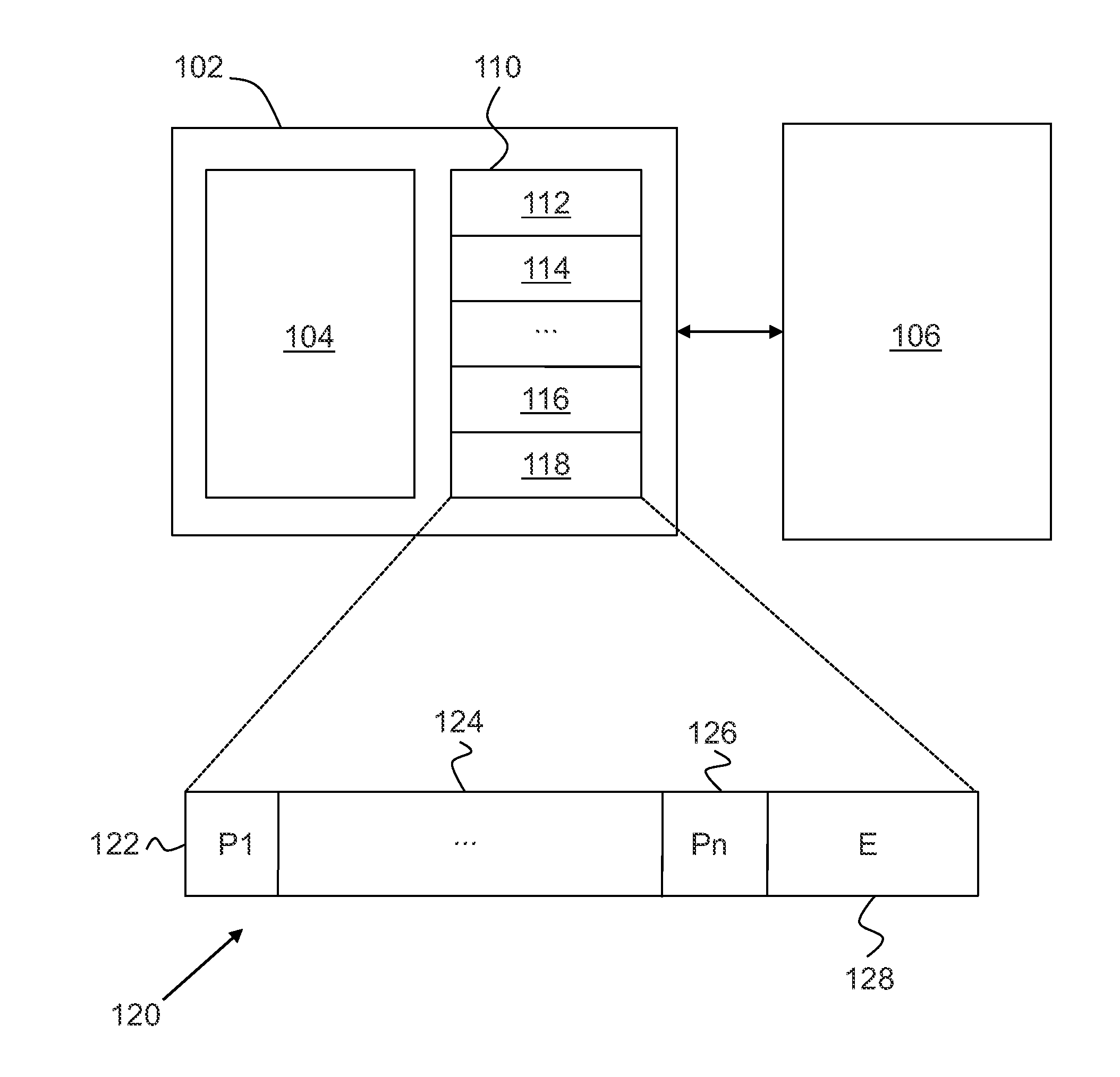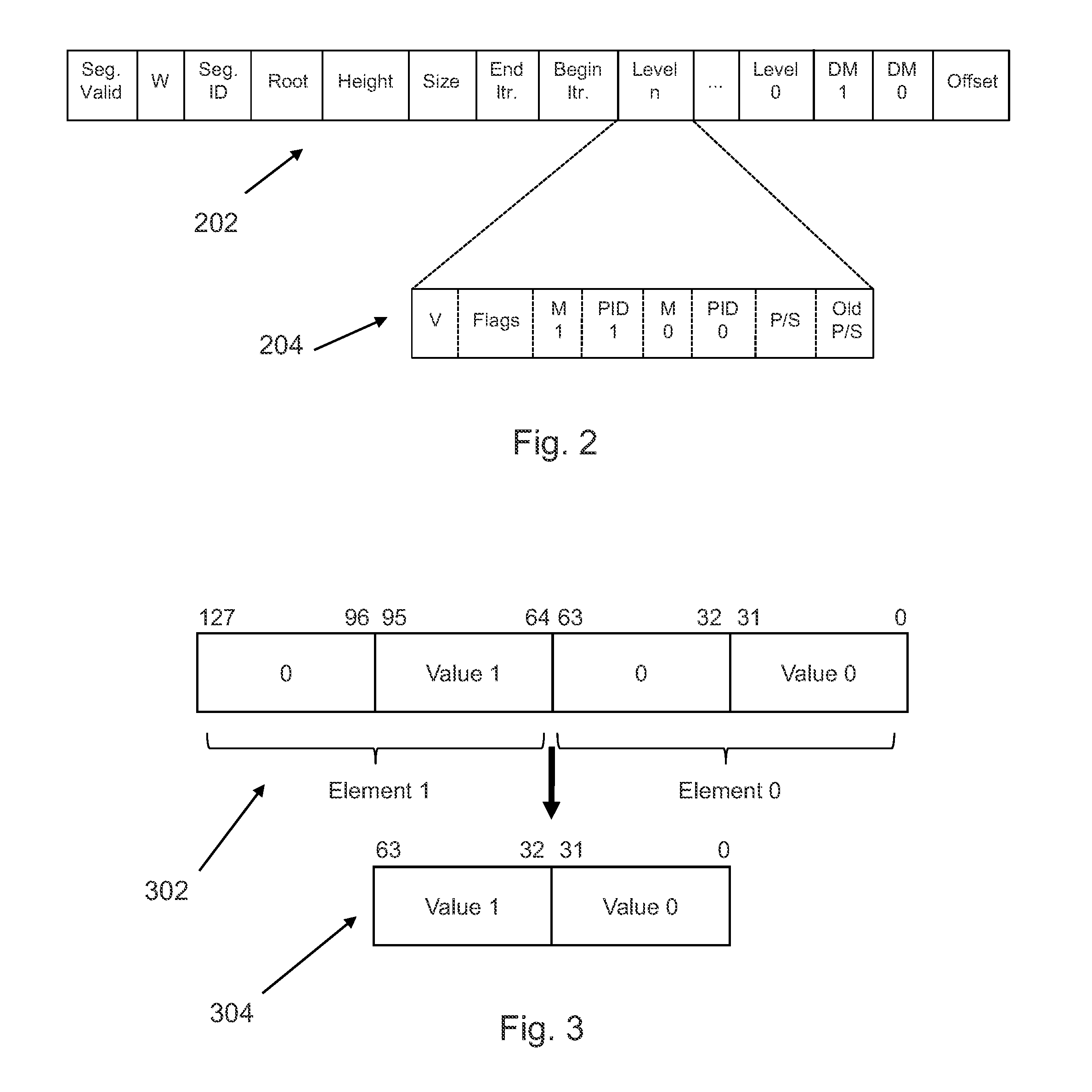Iterator register for structured memory
a structured memory and register technology, applied in the direction of memory address formation, micro-instruction address formation, memory address/allocation/relocation, etc., can solve the problems of increasing the difficulty of efficiently accessing software data structures, extra complexity and overhead of hardware data structure suppor
- Summary
- Abstract
- Description
- Claims
- Application Information
AI Technical Summary
Benefits of technology
Problems solved by technology
Method used
Image
Examples
case 1
[0207]Compacting two 64-bit elements (FIG. 3, 302 is non-compacted representation and 304 is compacted representation): If the line contains two data values or application-level pointers and the 32 most-significant bits of both elements are zeros, then each element can be stored using only 32-bits, allowing the whole line to be compacted as a single 64-bit value that has two 32-bit sub-elements. The resulting 64-bit value is then stored in the appropriate 64-bit field of the parent line.
case 2
[0208]Compacting four 32-bit elements (FIG. 4, 402 is non-compacted representation and 404 is compacted representation): If the memory line has four 32-bit elements that are data or application-level pointers, and 16 most significant bits of all the elements are zeros, each element can be stored using only 16 bits, and hence the whole line can be compacted into a single 64-bit value stored in the parent line.
case 3
[0209]Compacting eight 16-bit elements (FIG. 5, 502 is non-compacted representation and 504 is compacted representation): If elements in the original memory line contain data or application-level pointers and the 8 most significant bits of all elements are zero, each element then can be stored using only 8 bits and hence the whole memory line can be compacted into a single 64-bit value within its parent line.
[0210]More compaction cases are possible in embodiments with larger line sizes, where each case compacts a full line into a half line. For example, in an embodiment with 32 byte lines the compaction cases are as follows:[0211]a. Case 1—compact two 128-bit elements[0212]b. Case 2—compact four 64-bit elements[0213]c. Case 3—compact eight 32-bit elements[0214]d. Case 4—compact sixteen 16-bit elements
[0215]For detecting each of the above cases, a bit vector called Z can be defined, where Zi==1 if Bytei contains all zeros. Each of the above compaction cases can then be detected by ev...
PUM
 Login to View More
Login to View More Abstract
Description
Claims
Application Information
 Login to View More
Login to View More - R&D
- Intellectual Property
- Life Sciences
- Materials
- Tech Scout
- Unparalleled Data Quality
- Higher Quality Content
- 60% Fewer Hallucinations
Browse by: Latest US Patents, China's latest patents, Technical Efficacy Thesaurus, Application Domain, Technology Topic, Popular Technical Reports.
© 2025 PatSnap. All rights reserved.Legal|Privacy policy|Modern Slavery Act Transparency Statement|Sitemap|About US| Contact US: help@patsnap.com



